Patanjali’s Teachings: The Niyamas, or, The Rules for Living
In the book, “The Yoga Sutras of Patanjali,” there are the eight limbs of yoga. One limb is the niyamas, which concerns itself with the rules of living.
This post is part of a series on Patanjali, in which I explore the eight limbs of yoga, as they relate to meditation and living life.
See all posts on Patanjali and the eight limbs of yoga.
In summary, they are:
- yamas – the laws of life and social awareness
- niyamas – moral behavior
- asanas – what we think of in the western world as “yoga” – postures and positions
- pranayamas – breathing exercises
- pratyaharas – letting go of the senses to turn inward
- dharanas – focused attention
- dhyanas – meditations
- samadhi – expanded awareness and the settled mind
The idea is to get to samadhi: the settled mind.
The Rules for Living
According to Patanjali, there are five rules for living:
- Purity
- Contentment
- Self-discipline
- Self-study
- Surrender
You’ll see they’re all related to moral behavior. Let’s take a look at each of these in more detail.
Purity
This first niyama reminds you to strive for cleanliness, both physically and mentally. Of course, this is up to the individual as its expression can mean different things to different people.
Physical Cleanliness
This particular niyama invites you to take a look at the physical aspects of your life.
Do you maintain a clean body? A clean home?
Do you have an excess of “things” – even things that you are overly attached to?
Do you try to rid the body of “dirty” substances (such as junk food)?
Do you find entertainment that isn’t jarring, violent, or negative?
Maintaining cleanliness – in a way that you can be satisified with – helps to also clear and clean out your mental state, as well.
Mental Cleanliness
Practicing the eight limbs of yoga can help declutter the mind, and help purify it. This is through breathing, meditation, physical exercise, and more.
The idea here is to strive to do your best to get there. It is impossible to be perfectly clean in every aspect of our lives. It’s part of the human condition.
This particular niyama helps you to think about attachments: to the self, to things, to clutter.
For me personally, I am constantly striving toward less clutter, less attachment, and more cleanliness. When I was younger and living with my parents, you could “eat off of my mom’s floor.” At my house, I’d say do so at your own risk.
And well…this is where I am in my life.
Contentment
This niyama teaches that if you can learn to accept life as it is, then you will find contentment.
This is so much easier said than done, however.
Western culture, especially, embraces the opposite of this. The constant materialism and consumerism is what drives the economy. Endless commercials and savvy marketing encourage you to buy that shiny new car, that latest gadget, the new house with the latest styles of design.
The happiness that comes from buying things is temporary. It’s not long before you want something else. In essence, you’re resistant to the fact that you don’t have this thing now.
The same is true for goals and achievement. Get that college degree. Pursue the master’s degree. Land the dream job.
Once you do these things, then happiness will ensue, right?
In a word? No.
Happiness Comes From Within
This niyama shows us that happiness comes from within. It comes from your mindset and for your gratitude for what is present in your life right now.
The fact that you’re reading this right now suggests that your life isn’t all that bad now, is it?
You’re educated enough to read this. You have the freedom to find information. It even suggests that you have a broad world view, given that Patanjali and the sutras are ancient, ultimately translated from another culture and from Sanskrit. You have some stability in your life if you have access to the internet. Perhaps you’re even on a spiritual or even esoteric path.
Acceptance
Essentially, what we’re talking about here is acceptance. Acceptance for what is.
That doesn’t mean you can’t change it. But resistance to what is, is part of what causes suffering.
You change by making yourself smile. It’s proven that your mood will follow suit. You change through meditation, and constantly letting thoughts go. It’s about enjoying the journey, and not getting too preoccupied with the destination.
I experience this resistance when I worry about the things I always tend to worry about: money, what people think, traveling safely, to name some examples. I cannot tell you the peace I feel when I take a step back, smile, and immediately start counting my blessings.
It works every time. As time goes on, I experience much less worry and more peace as I deepen my spiritual practice.
Self-discipline
This third niyama is a fun one. It shows you how discipline, enthusiasm and a desire to learn are all wonderful virtues.
This can look like different approaches. It can be that you develop the discipline to follow through on a practice, such as learning a new language, or keeping a promise you made. It can look like making a commitment to your spiritual practice. Perhaps it is developing a new habit, or getting rid of an old one.
Effectively, this niyama encourages you to look at your mind, body, and spirit and to cultivate the discipline necessary to optimize them. This cultivation translates to an inner power that also helps to purify the mind and find contentment. It’s overcoming that which you do mindlessly.
If you are regular reader of this blog, you’ll know that I have no problem in the “enthusiasm” or having a “desire to learn” departments. I cannot help but read, learn, observe, study, investigate, and gain more knowledge every single day of my life.
I also recognize that a desire to learn can turn into an addiction, in which case, I would need to break that habit.
Self-study
This fourth niyama asks you to look at your life, internally, externally, or both. The key is to observe, so as to learn.
You can look at your overall physical life and analyze your habits, thoughts, and actions. This is an opportunity to observe, for example, whether you’re constantly running late to appointments. You can observe what you do when you’re stressed, or annoyed at something.
Then there’s your internal life. You can observe how you feel, act, your motivations, what angers you, what makes you feel content, that sort of thing. This is also encouragement to look at what happens to your mind when someone angers you.
You become really present, because you’re looking at what you’re doing moment to moment.
Become an Observer
By becoming an observer, you can detach from your attachment to what you think should be, to what actually is. This can be difficult because sometimes the voice kicks in. You know, the one that judges and criticizes.
But if you adopt an attitude of just noticing what is, almost like you are watching a silent movie, you unlock the door to higher compassion for yourself and for others.
One really great way to practice self study is through self-inquiry meditation. Developing a practice of asking “who am I?” both on and off the meditation cushion can help you uncover your truest self.
I practice self-inquiry meditation quite frequently. It has furthered my spiritual practice in innumerable ways.
Surrender
This last niyama suggests a true communion with yourself and with your higher power.
For atheists, that might look like a surrender to one’s highest self, or to the universe.
For someone who’s Christian or Jewish, this might look like surrender to God.
Whatever your beliefs, this niyama is more about recognizing that there is something divine in all of us, and connecting with that is to connect with Love.
This final niyama is the one of realization. In fact, it is said that if one can master this, all the other niyamas are moot. It is from the dedication to LOVE, in whatever form that may be, automatically makes the other niyamas, indeed the eight limbs of yoga fall into place.
Your ego evaporates. What’s left is grace. You’re compelled to live a life of devotion and service.
I personally have not learned this surrender. But as a spiritual being in pursuit of my highest self, this niyama is appealing to me.
Sources
The Yoga Sutras of Patanjali. Translated/introduced by Alistair Shearer. 1982. New York.
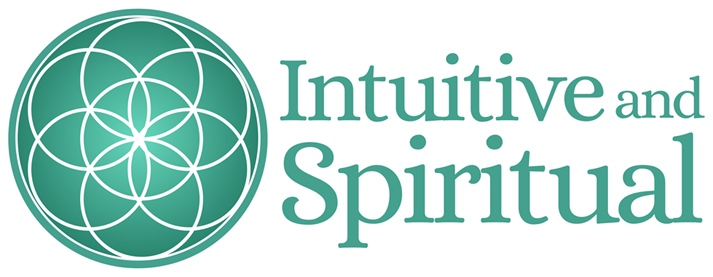
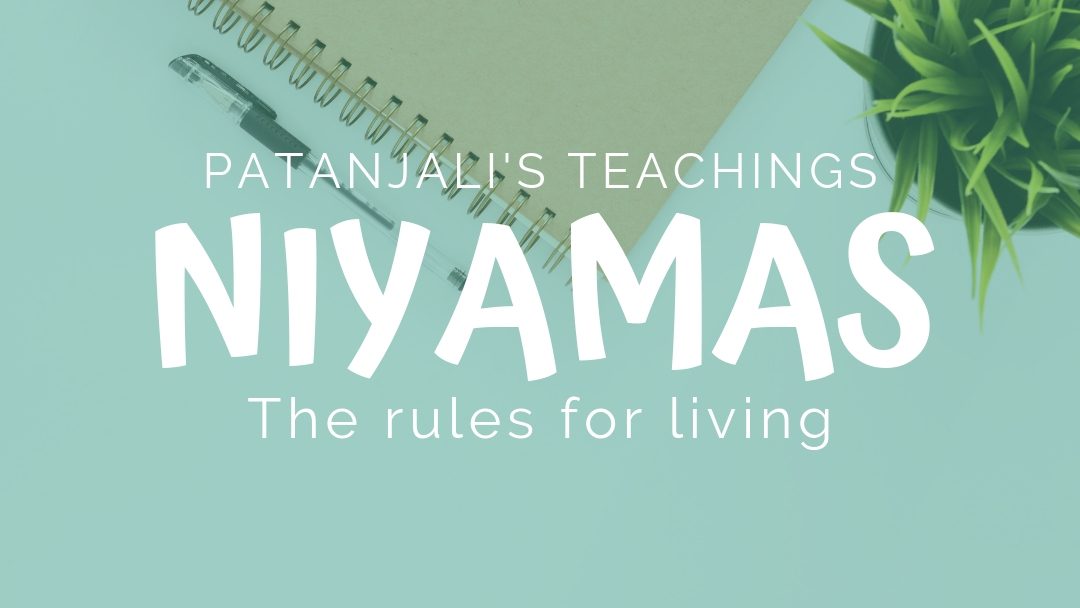
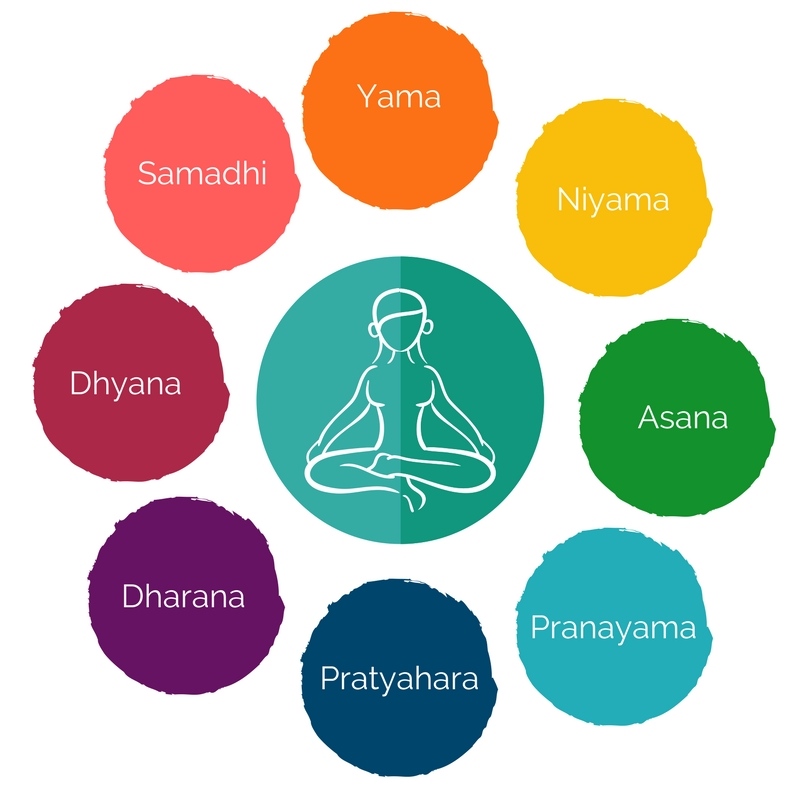


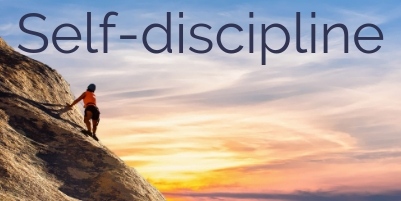
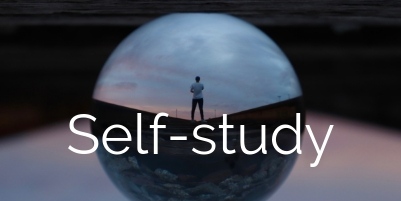

I admit much of this here today is truly new to me. That said, I enjoyed learning all about the rules for living according to The Niyamas and can’t thank you enough for sharing what you have learned through your own experiences so far. Hugs and Happy Monday to you, my friend now!! xoxo <3
Janine – I’m so glad I could help with conveying new information, hehe. You got your rules for living and now you will achieve living angel status. Oh wait, who am I kidding? You are already a living angel, my friend! You’re an incredible human whose support of my work is just so appreciated. Thank you so much for your kindness, your comments, your words – you are a gem! Happy weekend to you! Sending you big hugs!
Congrats on starting your course and diving more into your passion for teaching Cynthia. This post is filled with many great reminders on living a good life. May your dedication and wisdom serve many people.
Brad – thank you for that. 🙂 I love learning and sharing and hopefully folks enjoy. I’m looking forward to talking about the other limbs of yoga – and to keep up the momentum of teaching and sharing. Thank you, so much, for your kindness and support. It means the world to me. I hope you have a wonderful weekend! Sending hugs from Cackalack.
Namaste and thank you, Cynthia. Great post! I really enjoyed it and appreciate the links. My favorite aspect is that you “read” the post. Your voice is very soothing/calming and I find it relaxing to read along while you speak. The other plus is that it gives your post a personal touch, there is a face, a voice to connect with.
Have a wonderful week!
Sweet Denise! Namaste to you, as well! I really appreciate you, your support, your kindness, and insights. I’m glad that you enjoyed the way I set up the video. I do it that way so that someone on Youtube, who might not know of the website here, might discover the content, or that if someone prefers video format to written, it is an option. 🙂 Thank you for your feedback on my voice, hehe. I do hope to create a connection – I’m thrilled you picked up on that. Oh, I could just hug you!! I hope you’ve had a wonderful week yourself. 🤗🤗🤗
Hi Cynthia…
Great post and tons of information… well done….
Hugs
Rolly
Rolly, my friend! So great to see you. Thank you for your kindness and inspiration – always. I hope you’re staying warm up there over the cold border, hehe. Pat sweet Angel on the head for me.
I’m learning lots from your sharing and writing, dear Cynthia.
For me, the decluttering (mind and home) and the surrender are ongoing aspirations. It’s so rewarding to see even
the smallest pursuits in these areas.
All the best as you conduct the mindfulness training – exciting to see you / your work grow.
Keep warm. Love and peace, Maria
Mar – I’m thrilled that you are learning! I love to teach, and I know you do, too – you are a natural and I know your students are lucky to have you. You have great aspirations: decluttering the mind and surrendering are worthy endeavors. And you’re right: the small rewards along the way make it all worth it. They are part of what motivate me to keep doing what I’m doing. I feel this necessity, almost, to share this work, because of the benefits I’ve felt. Thank you for your sweet words and comments. I hope you’re staying warm, too. Peace and hugs coming atcha. ☮️🤗☮️🤗
My God, Lil Sis, I need a life coach who can find me some extra time. I didn’t think I would ever get to this; sorry I’m so later.
I hope you are well and safe from the storms. All is well here; a mild winter, a mild life. 🙂
Hugs always
Big Bro – hehe, your propensity to live a well-lived life is an inspiration to many. You have a beautiful life – family, farms, writing – that even though time is like the proverbial toilet paper roll, you have used it well. And may time continue to tick tock on for you, and allow you to continue making a difference for decades to come. I’m staying warm here in Cackalack, and I hope you’re doing the same across the Great Divide. Sending you hugs, my friend. You. Are. Incredible.
Wonderful Cynthia.. So enjoyed listening to your video. reminds me of the eight fold path of Buddha
Indeed we need to become observers, especially to what we ourselves are giving our attention to.. A great lesson for me was learnt this new year.. As I found myself getting caught up in the energies of others and the meditation fest of Spring Forest Qigong came at just the right time.. A SIGN for me to centre myself more and concentrate on my inner self once more..
So your reminders here are perfect timing again. and I have been in communion with myself these last few weeks..
Love what you are doing with your site Cynthia, it feels so energised ..
Sending love and well wishes your way my friend and thank you for ALL of your support and feedback.. It means a great deal.. <3
Sweet Sue – so wonderful to see you. Thank you for listening to the video. I often was thinking about Buddha and his teachings as I wrote this post. Though Patanjali was a predecessor to Buddha, I either think Buddha must have somehow found his writings, or Patanjali influenced Buddha. Hmm…I’m going to have to see if I can find that out. Oooh! Thank you for that idea. 🙂
I can’t wait to hear more about your experiences with the Spring Forest Qigong. Oh my goodness…I’ve been practicing a derivative of it – I think I mentioned this to you, yes? – it’s called zhauan zhuang (I think that’s how you spell it). It’s a way of standing completely still, and yet you’re lighting an internal fire. It is said that this practice helped the monks of millennia-past when they were getting sickly and sitting meditation itself wasn’t helping. Along came a sage who showed them this new type of still-movement meditation and it changed everything. I’m not sure of all the details, but I tell you…I just can’t get enough of all this. I’m intensely interested in the history of Atlantis and…get this…I don’t know if this is normal, but I’m really attracted to the idea of “traveling through space” with my mind. I don’t know what it is. When I was younger, I was really “holy” and very involved in the Catholic church. I remember that as one time I felt really spiritual, but from a religious standpoint. But I had this strong, strong urge to explore space and I had entertained the idea of being an astronaut – for a long time. Later, I learned that my creativity and penchant for being a free spirit would deter me from going into the military just to work at NASA or on other space projects. My intense interest in the celestial studies waned as did my spirituality. As I’ve become intensely spiritual once again, I feel this interesting urge to fly…through the stars, touching galaxies, seeing new places and ultimately…connecting with the universe. I don’t know if that’s normal, if that happens to others, but intuitively, I’m just letting my heart and mind go where they will and just seeing what happens.
I…think I just went on a big ol’ tangent. Hehe. Oh…it’s all of this beautiful meditation! The exploration. It’s almost like an addiction. But in a very good way. I just want to touch the universe…
Sending love and well-wishes to you. I hope you’re staying dry and warm on your side of the big ol Atlantic pond. Sending you hugs and blessings, also. Your support means a great deal to me, too. xoxo
I am not surprised you wish to fly through the Universe Cynthia.. We are all connecting and connected to the Stars.. Our ancient past is coming to meet us and as we expand spiritually we are also expanding our horizons into the unknown, but the unknown has always been held within.. It is just we are re-remembering who we are again..
My Meditations were profound. the first one I felt so connected to everything I cried like a baby. and I felt such peace as the week progressed.. I saw how I was in need of detaching from the world about me.. NEWs, Media everything.. So I absorbed myself in painting and making a scrap book, Along with putting some of my poems together.
I pondered how to show case my poems, and thought I would write how some of them came into being via the thoughts which were paramount at the time of writing some of them..
But it turned out I was writing more about my past and the wounds some of those poems contained . On reading it all back I deleted it.. It was another form of releasing that which no longer serves..
I will still put my poems in a book form I am sure I can do this.. But it will be mapped out differently.. Not certain as yet.. But I am sure I want to publish them, if only to get one copy to leave to my granddaughter lol..
I had thought of using the link you shared.. Creative writing I think it is.. but until I have the book ready its no good signing up for it as yet..
I wrote in my journal some of my thoughts I had that week of meditation.. It connected me back more closely again to my Spirit guide.. I began to listen again to the impressions they were giving me.. I had become worried internally about the way the world was progressing..
I was reassured all was in hand so to speak, And even those whom we think are not awake and whose hearts are still held in darkness, all are playing their parts to wake others as they awaken compassion and empathy. Energies which are needed to come to the forefront.
Lots to talk about, Oh wish we could natter over a herbal tea.. one day!! 😀
Take care of you, I hear some wild cold weather sweeping across America.. Hope you are snug as a bug where you are..
Much love Cynthia.. and Blessings <3
Hugs Sue <3
Sweet Sue – I think that’s part of what it is. At first, I feel the “judgment” coming on as I think about how ridiculous it seems to say something like “I want to fly through the universe” but I also think along the lines of what you said: that our ancient past is coming to meet us, so to speak. When I was watching those spirit science youtube videos, I was in awe about the idea of Atlantis and early humans and regardless whether it happened like that or not, the fact remains: there was a time when we were much more intuitive and connected to the earth.
Early humans had to be: they had not yet developed complex language, or writing, or even farming. They had to function on memory, intuition, and all their senses. I have to wonder at what ultimately made us turn away from that way of being. Perhaps it was so gradual, we didn’t know what happened. Settling down, living indoors, and losing our “wildness” tamed us, but there was a price to pay: we reduced our ability to understand and deeply appreciate the miracle of energy. Or something like that.
But, I think intuitively we know things are off. We know the planet cannot sustain what we’re doing to it right now and people are tuning in to the ‘earth frequency’ and beginning to understand the connection of all things. I still go back to that Zingdad book: that everything we’re doing has been agreed upon before we even got here. Ah, it’s hard to stomach when you take into account the suffering that’s happening, but then I suppose I do derive some comfort in the idea of the people in darkness eventually figuring out that there’s light…and we just have to overcome our fears.
I am so glad that meditation went so well for you, dear friend. This is why I love meditation – well, for so many reasons – but the moments of transcendence and connecting with love. It is just so incredible and beyond words to capture adequately the feeling.
It is cold here, but thankfully – with my cold-natured self – we did not get the brunt of those single digit temps. It was back to being a bit warmer weather today. 🙂
Sending you hugs and I’ll be over to your blog to finish commenting. Hehe. I love these conversations!!
That is so right Cynthia, our ancient past before what ever happened, I do believe our ‘former’ human selves were much more enlightened than we are today.
Gifts that have long laid dormant and been made to be ‘Taboo’ of our intuitive ways were once everyday realities.
Such as telepathy and healing, and we then lived much, much longer. And even if you go back into the Biblical archives you would find Moses who lived a great age.
Atlanteans were said to live hundreds of years, rather than our normal three score year and ten. 😀
We are taught early humans were Neanderthal, and maybe in places they were. Which then begs the question of how such places as the pyramids were built, and when the oldest scientific dated stone is found to be at the top of the pyramids rather than on the foundation. No one is really answering the fete of engineering that even today with all our technology would be hard pressed to repeat to the precision of cut stone with no gaps. Let alone the alignment of them with Orion, and the knowledge of the Stars and orbits etc.
I do not think our evolution was as the Darwin theory suggests, I really believe our ‘present’ Human selves were manufactured. And when you look into our brain, grey matter, even science cannot explain why we only use one tenth of our brain? So what is the other nine-tenths for?
And as Gregg Braden and other scientific researches in his field are discovering, they see that our DNA was fused in its present form around 200,000 yrs ago.
So as we both understand deeper things through reading Zingdad and other material, we are far, far more capable than ever we thought possible.
Which is why Deepak Chopra and Dr Joe Dispenza and others like Bruce Lipton. You might like this video Gregg Braden, Dr. Joe Dispenza & Bruce Lipton Ph.D @ TCCHE 2017 when you have time to watch it.
And yes everything is supposed to happen.
And yes would love for that day to meet face to face dear Cynthia.
Sweet Sue, I’m with you. I really think the ancients were more enlightened than we are. In fact, I even wondered if they actually were able to ascend. I love entertaining the possibility. It really is so fun to imagine. It’s also pretty amazing that being psychic, or developing intuition, things like that, have been rendered taboo in our society. I’m still reading the book,”how enlightenment changes your brain,” and the author goes into this a little bit. In the middle ages, during the period that they call”Enlightenment,” the emphasis was on what are called”Little E” experiences. According to the author, these little experiences provided valuable insight to the thinkers of the time. In the meantime, in Eastern society, the focus was on”Big E” experiences–what we think of as true enlightenment. The author surmises that the little E experiences allowed Western society to make gains and focus on knowledge and science. Eastern society at the time focused on more personal and spiritual development. They also do not have the same taboos that we have in Western society regarding that which we cannot see. It’s all fascinating, and even though this stuff has become the norm in my own life, I have to stop and remember from time to time that how I think, and what I do, isn’t necessarily considered that normal. Sure, mindfulness and meditation are becoming more prominently known. But I don’t think most people are seeking enlightening experiences such that they will practice for an hour or two at a time. But I am also running into more people who are adopting these practices, and that is good to see.
Still, I think we are so much more capable doing things with our minds that we think are impossible. I am in agreement with you. The more I meditate, the more I read and find out about metaphysical things, the more I’m beginning to understand just how much our minds play a role and not only our 3-D existence, but that we in fact have a connection to other dimensions and we don’t even know it. I feel like a kid in a candy store right now at this point in my life. There is so much I am discovering, learning, and it is so, so incredible. Words can’t even describe what I’m feeling. In any case, I will take a look at the video. Thank you so much for sharing. Sending you hugs, love, and light.
Opps the link of video didn’t come through only the header. https://youtu.be/P_FIYwg2oU4 So here it is.. Much love my friend <3
Indeed Cynthia, I think more and more are waking up to the senses we have so long suppressed and forgotten how to use, I And we become sponges soaking up information.. I can not tell you the amount of reading I used to do on such subjects. and Oh if you lived closer you would be privy to borrow them all.. We do not know half of it!… 🙂 <3 🙏
Sweet Sue – I love this! I really think we are waking up to long-lost sense. At least some of us, anyways. 🙂 Sponges…that’s what I feel like. Hehe. I feel like I must read more. 🙂 And this is where my practice diverges from Hinduism or Buddhism, I think. I am also open to incorporating ideas from ancient cultures that used the power of the feminine, for example. Or cultures that incorporated the labyrinth as meditation and things like that. You know…I think it would be awesome to turn into a fairy (or fairie!) hehe. But that’s just me and I’m smiling as I write this. Sending you hugs and wishes for a wonderful week!